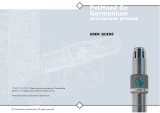Vox VBM1 provides you with a plethora of great additional guitar tones that feel as good as they sound. It's a truly versatile piece of gear that's ideal for practicing, recording, or hooking up to your favorite amp for added gain and sustain.
With its 10 watts of power and 6.5" speaker, the Vox VBM1 is perfect for getting that classic Brian May sound. It features controls for Gain, Tone, and Volume, plus a High/Low Gain switch for even more tonal flexibility.
Vox VBM1 provides you with a plethora of great additional guitar tones that feel as good as they sound. It's a truly versatile piece of gear that's ideal for practicing, recording, or hooking up to your favorite amp for added gain and sustain.
With its 10 watts of power and 6.5" speaker, the Vox VBM1 is perfect for getting that classic Brian May sound. It features controls for Gain, Tone, and Volume, plus a High/Low Gain switch for even more tonal flexibility.















-
 1
1
-
 2
2
-
 3
3
-
 4
4
-
 5
5
-
 6
6
-
 7
7
-
 8
8
-
 9
9
-
 10
10
-
 11
11
-
 12
12
-
 13
13
-
 14
14
-
 15
15
Vox VBM1 provides you with a plethora of great additional guitar tones that feel as good as they sound. It's a truly versatile piece of gear that's ideal for practicing, recording, or hooking up to your favorite amp for added gain and sustain.
With its 10 watts of power and 6.5" speaker, the Vox VBM1 is perfect for getting that classic Brian May sound. It features controls for Gain, Tone, and Volume, plus a High/Low Gain switch for even more tonal flexibility.
Ask a question and I''ll find the answer in the document
Finding information in a document is now easier with AI
Related papers
Other documents
-
AMC POWER BOX 61 User manual
-
Axiom OP-1 Analog Overdrive Preamp Pedal User manual
-
Motorola Signal Booster Supplementary Manual
-
DigiTech ARTist series User manual
-
Steinberg VST Instruments Virtual Bassist User manual
-
Korg PXR4 User manual
-
 TritonAudio FetHead Germanium User manual
TritonAudio FetHead Germanium User manual
-
Korg D1600 User guide
-
WREN AND CUFF BM20-Ultra User manual
-
DigiTech RP500V Owner's manual















